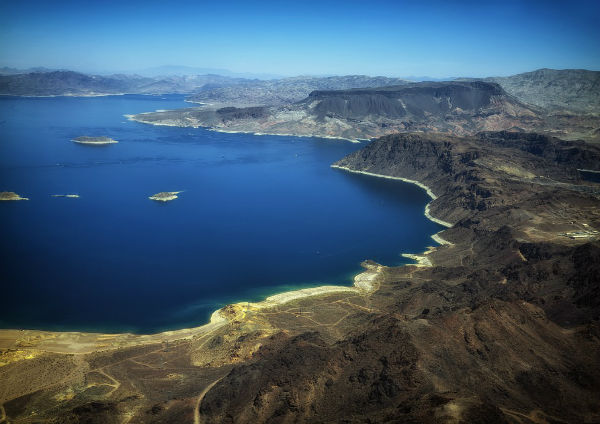
By Bobby Yalam
Although our northern neighbor California has received outstanding snow and rainfall levels, especially considering the current drought, Arizona has not had the same good fortune. The Rocky Mountain Range, which serves as a major source for the Colorado River, has produced significantly less runoff from its snowpacks than anticipated.
Due to this decline in moisture released into the Colorado River, its water deposits into Lake Mead are predicted to similarly drop. The Federal Bureau of Reclamation now projects that weaker inflows will result in water levels in Lake Mead that are 20 feet lower by 2019 than projected in May.
The drop in water levels correlates to the faltering flows from the Colorado River into Lake Powell, located upstream from Lake Mead. With higher temperatures than usual, the dry spring in the Rocky Mountain Range caused snow on the western slopes to melt prematurely, creating an unreliable water supply for the Colorado River.
Considering the previous relief brought by this year’s exceptionally wet winter and ample snow supply, the anticipated decline in water levels is shocking to many. Many analysts even previously predicted a rise in Lake Mead due to a release of winter moisture from Lake Powell. However, these hopes were crushed once May showed signs of diminished water flows from the Colorado River.
With the water releases from Lake Powell expected to diminish, water analysts no longer anticipate an “equalization release” from Lake Powell to Lake Mead. Instead, a “balancing release” is expected, which could impact Lake Mead if it does not surpass the shortage water level of 1,075 feet.
In response to the uncertain and bleak outlook for Lake Mead, on June 13, 2017, the Phoenix City Council, along with tribal, federal, and philanthropic leaders, established an agreement to protect the Colorado River and the water levels in Lake Mead. The agreement focuses on limiting usage of Colorado River water through the participation of water entitlement holders, among other interested parties. Although the ultimate impacts of the agreement will be revealed as time passes, the intended outcome is to ensure the availability of future water supplies from the Colorado River and to work against the drought afflicting Lake Mead.
For more information on the sinking water levels at Lake Mead, visit: https://new.azwater.gov/news/articles/2017-14-06-0
For more information on Phoenix City Council’s efforts to preserve Lake Mead and the Colorado River, visit: https://new.azwater.gov/news/articles/2017-14-06






